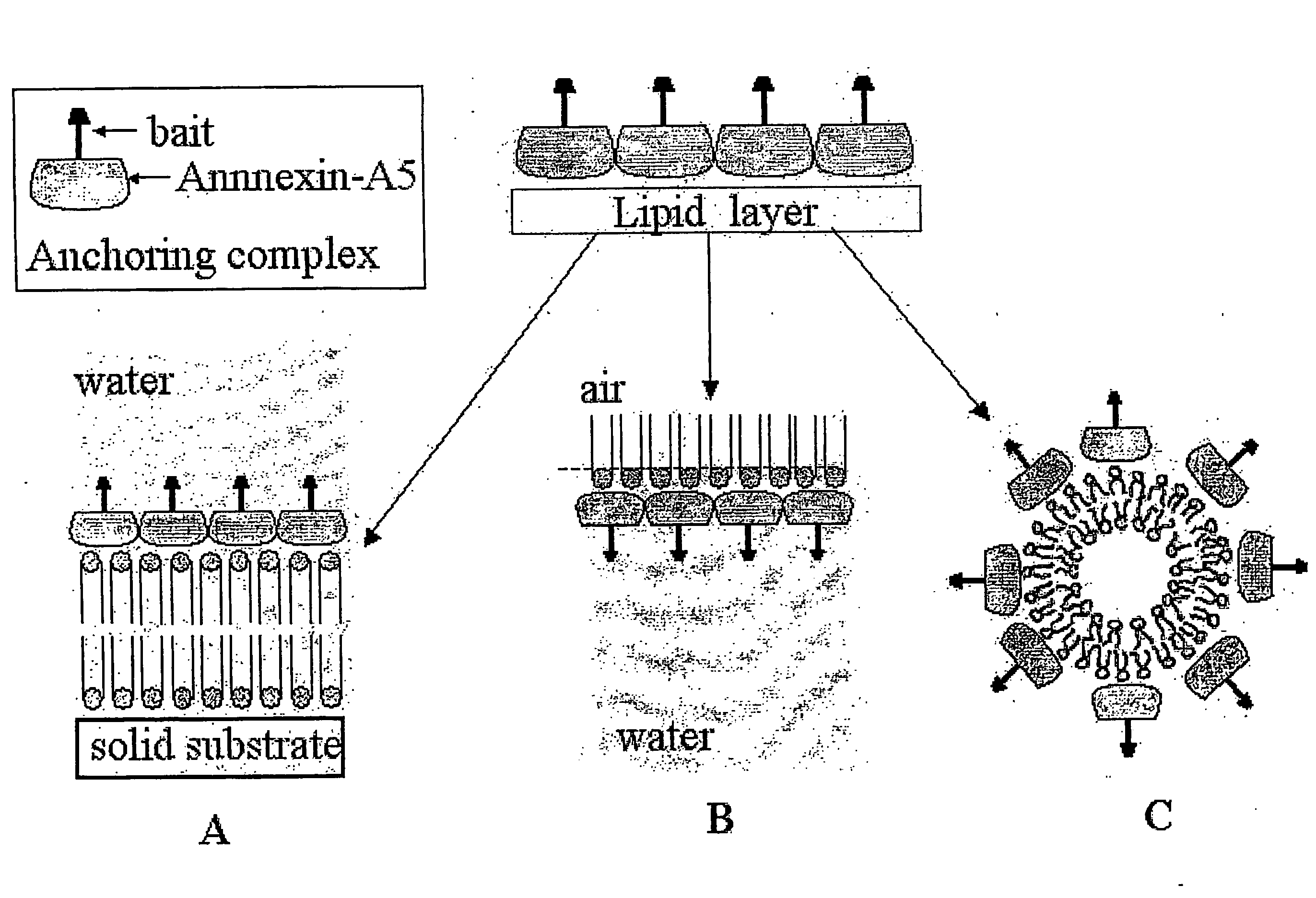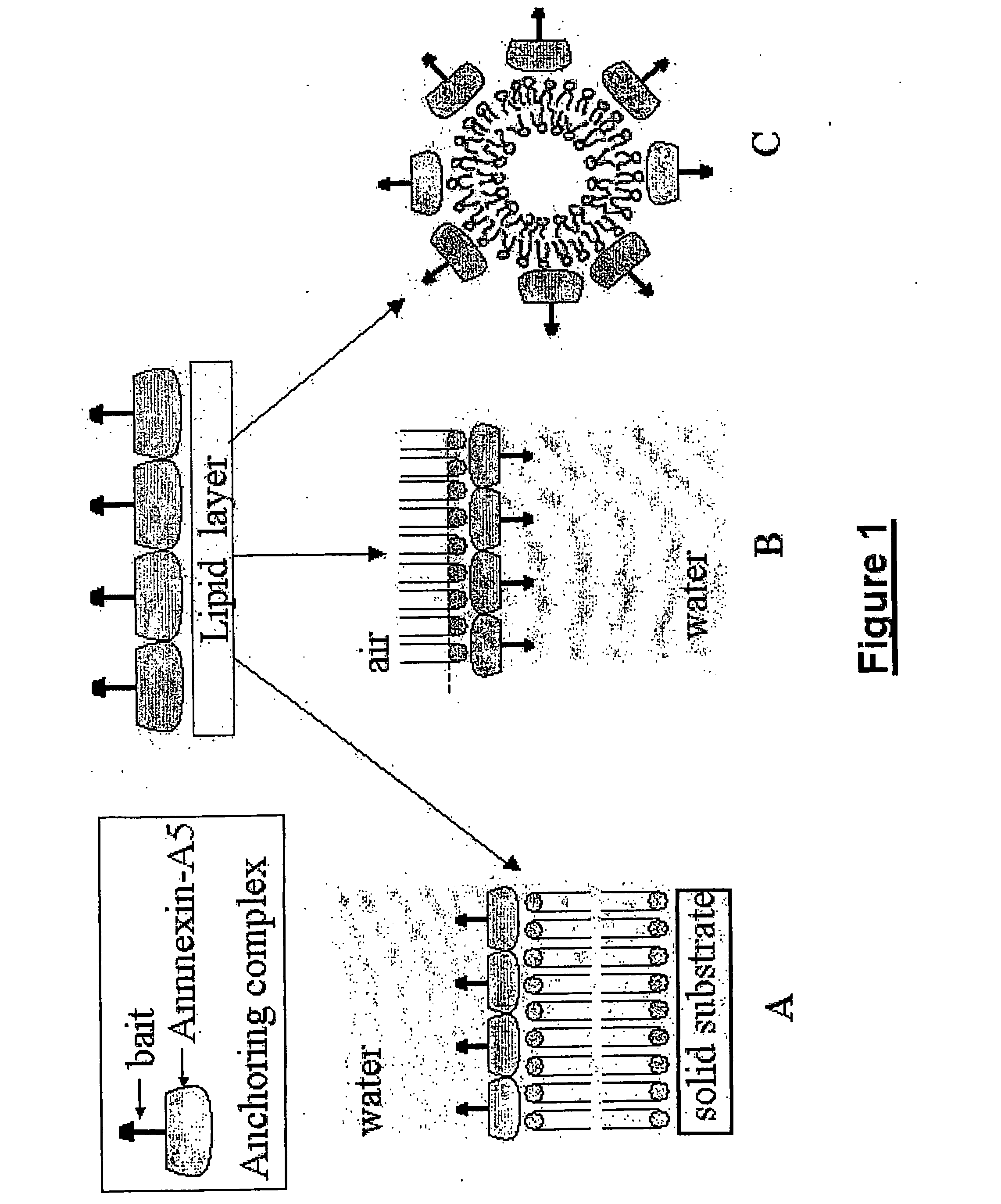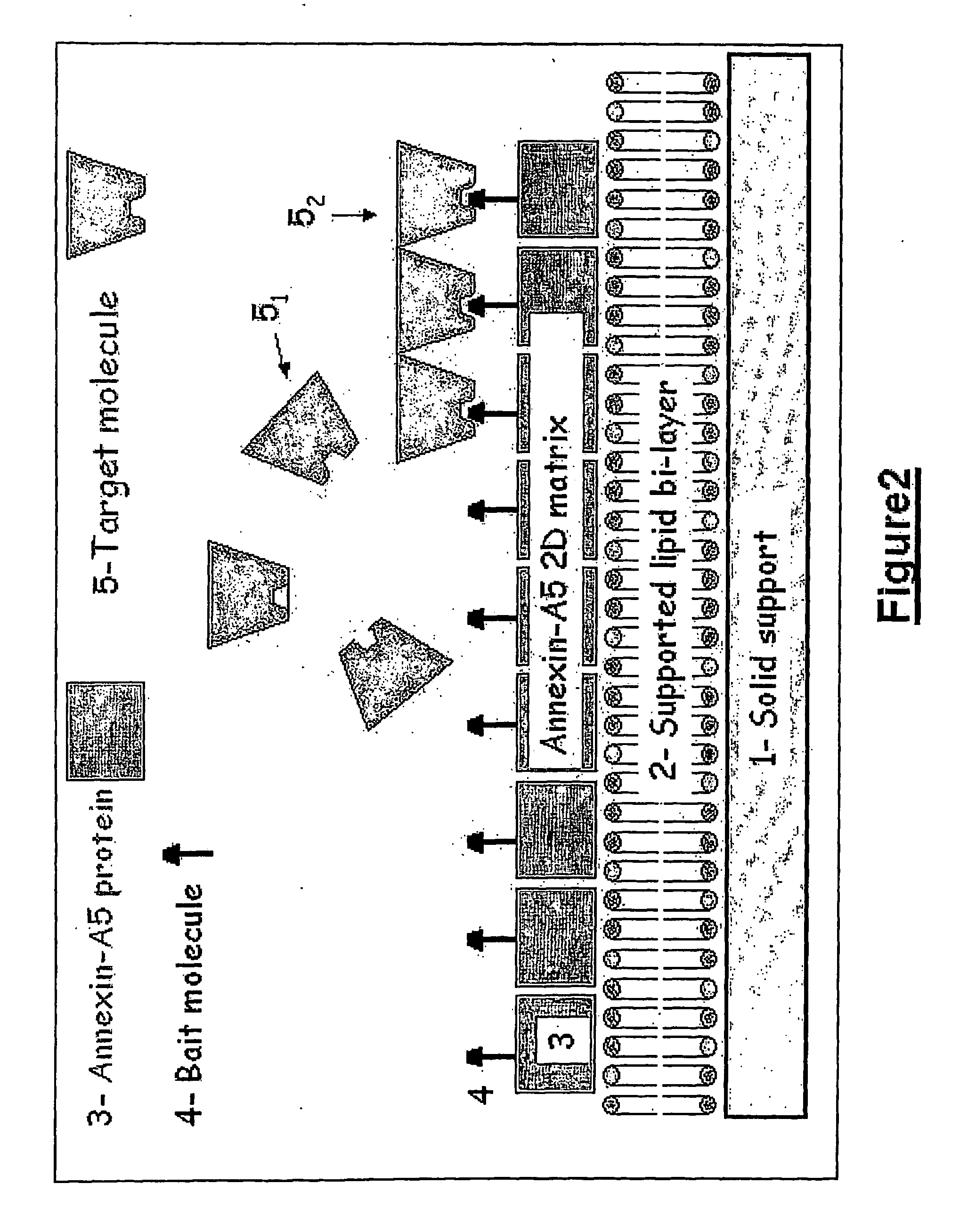Device for binding a target entity to a bait entity and detection methods using the same
a detection method and target technology, applied in the field of targeting devices and target entities binding to bait entities, can solve the problems of bait protein not being optimally available to its corresponding target molecules, above linking methods possess various technical drawbacks, and the orientation of the bait protein is not controlled
- Summary
- Abstract
- Description
- Claims
- Application Information
AI Technical Summary
Benefits of technology
Problems solved by technology
Method used
Image
Examples
example 1
Production of a Fusion Complex Between Annexin-A5 [T163C; C314S] and a Second Protein by Recombinant DNA Technology Methods, Wherein Said Second Protein Consists of the ZZ Domain of Protein A from Staphylococcus aureus
example 1-1
Construction of Annexin-A5 [T163C: C314S]-ZZ Expression Vector
[0336]The expression vector containing the coding sequence of rat Annexin-A5 linked to the coding sequence of the ZZ domain analogous to protein A from Staphylococcus aureus was constructed by standard methods of molecular biology.
[0337]The rat Annexin-A5 coding sequence was excised by NcoI digestion from a pKK233-2-Annexin-A5 expression vector (Pepinsky et al., 1988) and cloned into the expression vector pGELAF+ (Schanstra et al., 1993) between two NcoI restriction sites, resulting in the pGEF-A5 expression vector.
[0338]Site-directed mutagenesis was performed by standard procedures (Kunkel, 1985) to insert the double mutation [T163C; C314S], resulting in the pGEF-A5B expression vector. All the assays available to us were performed to verify that the (T163C; C314S) double-mutant Annexin-A5protein presents all the known properties of wild type Annexin-A5, particularly in what concerns its binding to lipid membranes, and th...
example 1-2
Expression of the Annexin-A5-ZZ Fusion Protein
[0343]Escherichia coli BL21 (DE3) cells were transformed by heat shock with plasmid pET-A5BZZ. Cells were plated on LB plates containing ampicillin (100 μg / mL), and incubated overnight at 37° C.
[0344]One clone was collected and incubated in 25 ml LB-ampicillin medium at 37° C. for ˜20 hr, ending up with an OD600˜3. The necessary volume was taken and diluted to an OD of 0.1 in 400 mL LB-ampicillin medium.
[0345]The culture was then incubated at 30° C. until OD reaches 0.6-0.7, after which induction was started with 0.4 mM IPTG and incubation was carried out for another 16 hr at 30° C. The final ODf was measured.
[0346]The cells were harvested by centrifugation (10 min, 6,700 g) and the pellet was resuspended in a volume of buffer containing 10 mM Tris, 1 mM EDTA, 0.01% NaN3, 10% glycerol, pH 7.5, equal to 6.7×ODf.
[0347]The cell suspension was sonicated at 4° C. with a Branson sonicator operated in a pulse mode with five steps of sonication ...
PUM
| Property | Measurement | Unit |
|---|---|---|
| MW | aaaaa | aaaaa |
| MW | aaaaa | aaaaa |
| volume | aaaaa | aaaaa |
Abstract
Description
Claims
Application Information
 Login to View More
Login to View More - R&D
- Intellectual Property
- Life Sciences
- Materials
- Tech Scout
- Unparalleled Data Quality
- Higher Quality Content
- 60% Fewer Hallucinations
Browse by: Latest US Patents, China's latest patents, Technical Efficacy Thesaurus, Application Domain, Technology Topic, Popular Technical Reports.
© 2025 PatSnap. All rights reserved.Legal|Privacy policy|Modern Slavery Act Transparency Statement|Sitemap|About US| Contact US: help@patsnap.com



